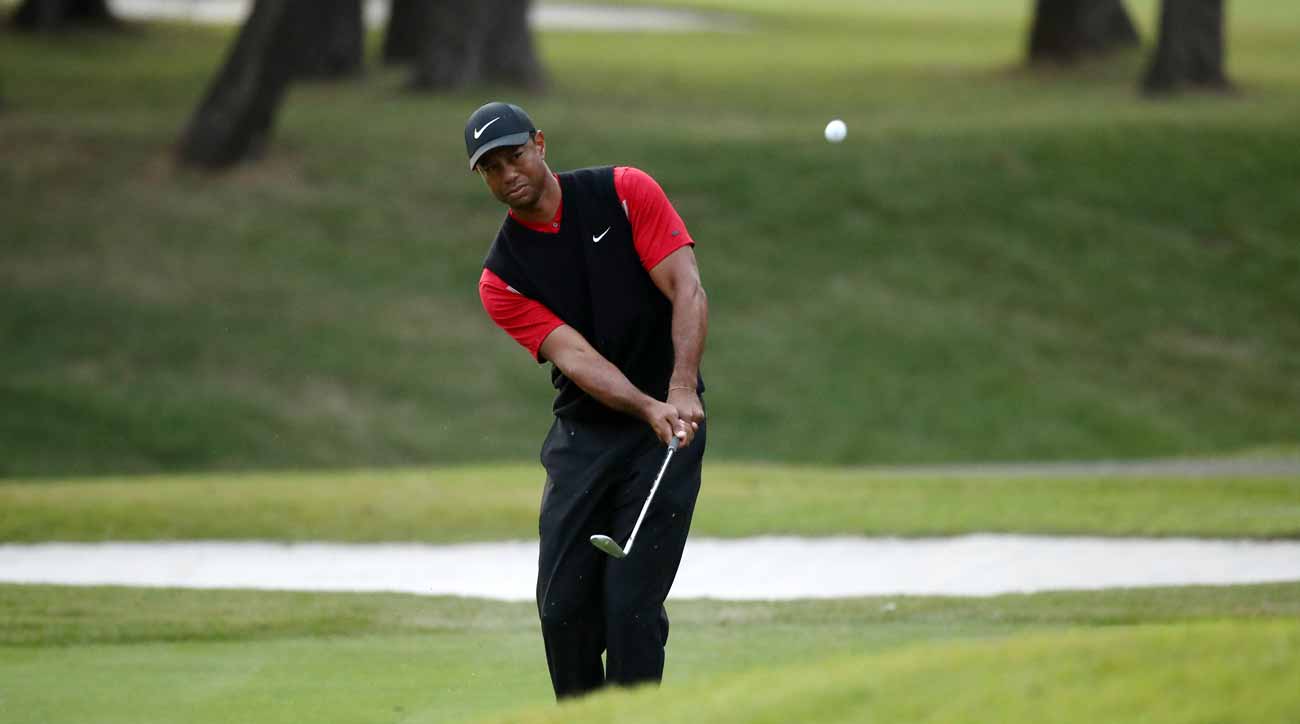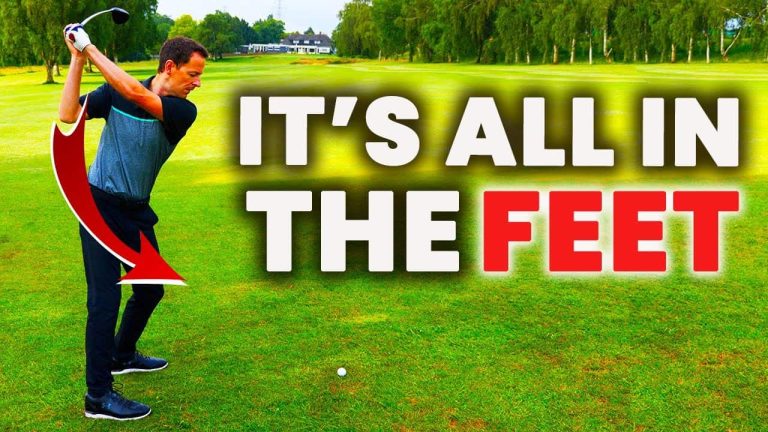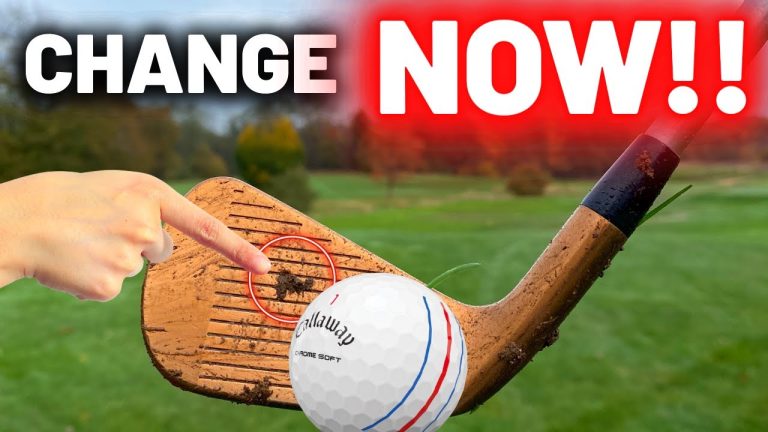Mastering the Art of How to Chip in Golf: Essential Tips and Techniques
Key Takeaways:
- Chipping is an essential skill in golf that involves making short, controlled shots to get the ball onto the green and closer to the hole.
- Proper technique and setup are crucial for successful chipping, including having good posture, making adjustments to stance and setup, and controlling ball position and distance.
- Regular practice, choosing the right golf club, and avoiding common mistakes are key to enhancing chipping skills and improving your short game in golf.
Introduction
Explanation of the MECE Framework
The MECE Framework stands for Mutually Exclusive and Collectively Exhaustive. It’s a strategic tool used to structure and organize information. People use this in problem-solving and decision-making across industries, including management consulting.
MECE helps make sure all possible options are examined without overlap or gaps. It breaks down complex problems into smaller, distinct components that cover the entire issue.
In golf, we use MECE to analyze technique, mistakes, tips for improvement, and the importance of chipping. This way, all relevant elements are addressed without duplication or omission.
Golfers can approach chipping with a structured mindset. They assess posture, setup, club selection, and distance control in a systematic way. By considering each aspect independently and as a collective, they can refine their chip shots more effectively and consistently.
This framework allows golfers to understand the importance of regular practice and customize their technique to their personal style. It helps them unlock their full potential in chipping – give it the attention it deserves and you’ll reap the rewards in your golf game.
Quick Guide
1. Choose the Right Club
- Club Selection: The right club for your chip shot depends on how much you need the ball to roll. A pitching wedge or a sand wedge is often used for shorter rolls, while a 7 or 8-iron might be better for longer rolls.
- Understanding Loft: Higher lofted clubs will make the ball fly higher and land softer with less roll, while lower lofted clubs will keep the ball lower and allow it to roll more.
2. The Setup
- Stance: Stand with your feet closer together than you would for a full swing, and place the ball back in your stance. This position helps in striking the ball with a descending blow.
- Weight Distribution: Lean slightly towards your target, with more weight on your front foot. This setup encourages a more controlled swing.
3. The Swing
- Backswing: Keep your backswing short and controlled. The length of your backswing will determine the distance the ball travels.
- Downswing and Impact: Keep your wrists firm and avoid too much hand action. Your shoulders and arms should do most of the work.
- Follow-Through: Follow through with your swing, ensuring it is proportional to your backswing. This balance will help you control the distance of your shot.
4. Ball Position and Grip
- Ball Position: As a general rule, play the ball off your back foot to ensure a lower trajectory and more roll.
- Grip: Use a softer grip. Tension in your hands can lead to less feel and control over the shot.
5. Practice and Common Mistakes
- Practice: As with any golf skill, practice is key. Spend time at the chipping green experimenting with different clubs and distances.
- Common Mistakes: Avoid the tendency to ‘scoop’ the ball to get it airborne. Trust the loft of the club to do that. Also, watch out for decelerating on your downswing, which can lead to chunked or thin shots.
6. Mental Approach
- Visualization: Visualize the shot before you take it. Picture how the ball will fly, land, and roll towards the hole.
- Relaxation: Stay relaxed and confident. Tension can ruin the finesse required for a good chipping stroke.
The Basics of Chipping in Golf
Mastering the basics of chipping in golf can significantly enhance your game. Discover the secrets of a successful chip shot and understand the vital role chipping plays in improving your overall golf performance. With an aim to elevate your skills on the green, let’s delve into what defines a chip shot and explore why chipping holds such immense importance in the world of golf.
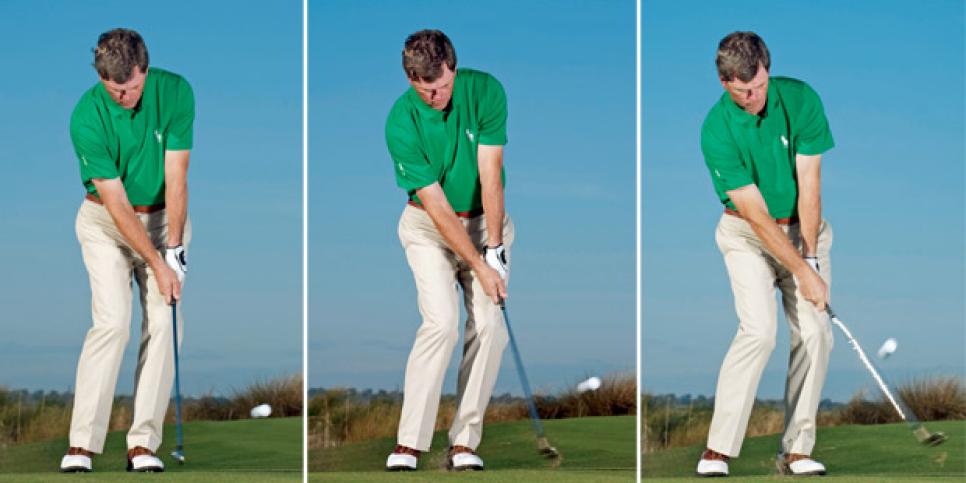
What is a Chip Shot?
A chip shot in golf is a low-flying, short shot that’s played close to the green. It’s used when a golfer can’t make a full swing with a longer club due to a lack of space. The aim is to get the ball onto the green and rolling towards the hole, using minimal loft and allowing for control and precision.
Good posture is important to master chipping. Have a slight bend at the hips and knees for stability. You may need to adjust stance and setup depending on factors like lie angle, wind conditions, etc. Where you place the ball and controlling distance are also important.
To improve chipping, practice specific drills and warm-up exercises. Know which club to use, as different clubs offer varying degrees of loft and bounce. Don’t decelerate through impact, maintain proper acceleration for clean contact. Also, avoid improper weight distribution or grip pressure.
Consider trying a drill that involves placing a towel or tee halfway between the ball and the hole. Aim to land past this target, allowing for controlled roll towards the hole.
Chipping is different from pitching in that it requires lower trajectory shots and more roll on landing. Pitching is the opposite.
With enough practice, you can become confident in executing chip shots effectively. Use training aids, like alignment sticks or mats, to enhance your skills.
Importance of Chipping in Golf
Chipping is a major part of golf. It means striking the ball from a short distance onto the green, aiming for precision and control. This skill helps golfers get closer to the hole from various spots around the green, meaning better chances of sinking putts and lower scores.
Mastering chipping is a must for any golfer wanting to improve their short game. Good posture is essential, as well as adjustments to stance and setup. Ball position and distance control are also essential. Before games, warm-ups and practice are key.
The right club makes a huge difference for chipping success. Knowing the importance of chipping and common mistakes is essential for improving. Drills specifically for chipping can help too. There’s a difference between chipping and pitching, so golfers must understand that.
Enhanced chipping can really boost one’s short game. Mastering this skill can give players more successful putts. Training aids can also support chipping practice. Regular practice is needed to keep up proficiency, while finding one’s personal style can further elevate performance.
Proper Technique and Setup for Chipping
Proper technique and setup for chipping is essential in improving your golf game. Understanding the importance of good posture, making adjustments to your stance and setup, mastering ball position and distance control, and incorporating effective practice and warm-up routines will significantly enhance your chipping skills.
With these key elements in place, you’ll be on your way to mastering the art of chipping and increasing your chances of success on the golf course.
Importance of Good Posture
Good posture is essential in golf. When chipping, alignment and body position are key for accurate shots. Correct posture helps golfers build a strong foundation for their swing, allowing better contact with the ball and influencing the distance and trajectory.
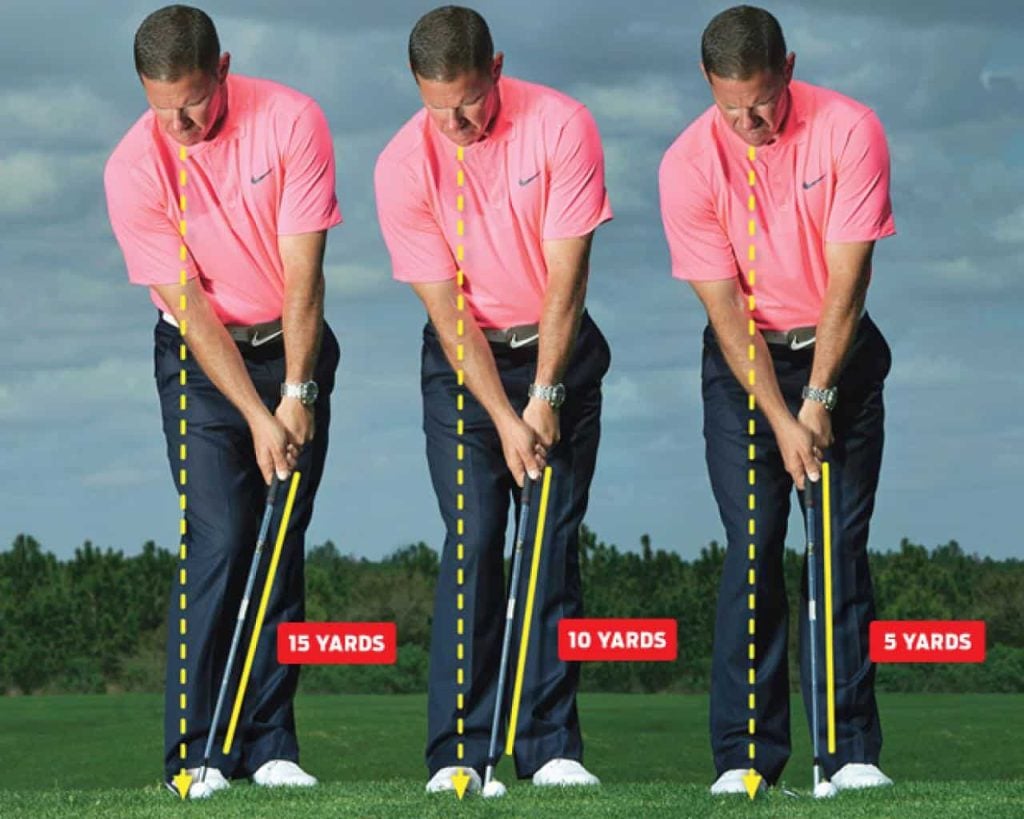
For best results, golfers should adopt a relaxed yet athletic stance, with feet shoulder-width apart. Bend knees slightly for stability. Keep the back straight and tilt from the hips to distribute weight on the balls of the feet.
Posture also helps golfers adjust their stance and setup for different chipping scenarios. A neutral spine enables precise grip, hand placement, and clubface alignment changes. These are necessary for various shot types and conditions.
Good posture is therefore vital in golf to improve performance and get consistent chip shots.
Adjustments to Stance and Setup
Proper Body Alignment: For a successful chip shot, it’s essential to get your stance and setup right. Stand parallel to the target line. Feet open towards the target. This helps create a proper swing path. You’ll have better control and accuracy.
Grip Adjustments: Grip’s important too. Use a slightly firmer grip than usual. Neutral or weaker grip helps make clean contact with the ball. No unwanted slices or hooks.
Club Selection Considerations: Club choice is key. Wedges or short irons are popular for chip shots. Higher loft helps get the ball close to the hole. Get to know different clubs for different distances and conditions.
Unique details: Comfort is key. Experiment with slight variations to find what works for you.
True story: I remember my first time chipping. Poor posture, wrong grip pressure. So, I sought help from a pro. Small adjustments made a huge difference. It changed my chipping game and my scores.
Mastering ball position and distance control in chipping? Just right!
Ball Position and Distance Control
Golfing success relies on proper ball position and distance control. Knowing where to place the ball and how far to hit it greatly affects the outcome of your chip shots. Here are tips to help you get it right:
- Ball Position: For most chip shots, the ball should be placed near your trailing foot, slightly further back in your stance. This encourages a downward strike, leading to clean contact and less loft.
- Clubs: Depending on the club you choose, different spin and trajectory can be achieved. Lower lofted clubs like 7 or 8 irons should have the ball positioned further back, while higher lofted clubs like sand wedges require a more neutral position.
- Distance Control: Control the distance by changing the length of your backswing, rather than swing speed. Experiment with different lengths to find consistency in distance control.
For more detailed instructions on how to chip in golf, check out this article on how to chip a golf ball.
The above tips can help golfers improve their chipping skills. Additional factors like posture and regular practice also determine success on the green. Keeping a consistent style and training aids can help refine your form and technique. Through practice and commitment, golfers can master their chipping capabilities.
Tips, Techniques, and Common Mistakes in Chipping
When it comes to chipping in golf, mastering the right techniques and avoiding common mistakes can make all the difference in your game. In this section, we’ll explore various aspects of chipping, including tips on choosing the right club, common mistakes to avoid, a drill for improving your chipping skills, and understanding the difference between chipping and pitching. Get ready to level up your chipping game and enhance your overall performance on the golf course.
Choosing the Right Club for Chipping
Pick the right club for chipping – it’s key for your performance. Bad choice of club will affect the shot’s control and outcome.
- Selecting the perfect one: Think about distance, lie of the ball, and trajectory when choosing. Each club has particular traits impacting control and range, so go carefully.
- Examining the lie and conditions: Look at terrain, grass height, etc. influencing the ball’s lie before deciding. E.g., if it’s on firm ground with little rough, a low-lofted club may do.
- Matching distance: Loft angles of clubs differ, affecting their ability to reach different distances. Select an appropriate one to match desired yardage for chipping.
- Your preference and practice: Consider your own comfort and experience with certain clubs for chipping. Test them in practice to determine which gives you the best performance and confidence.
Be sure not to make comedy-worthy mistakes – choose your club wisely and chip with confidence!
Common Mistakes to Avoid
Chipping is key in golf. To master it, avoid mistakes that can affect performance. Understand and address them to improve technique and develop short game skills.
Wrong club selection can cause inconsistent shots and distance control issues. Pick one that allows for a clean contact and desired trajectory/roll.
Improper alignment of body/clubface leads to off-target shots and difficulty controlling direction. Properly align to the target and ensure clubface is square at address.
Ball placement affects contact, trajectory, and control. Place slightly back of center for a clean strike and optimal spin.
Establish smooth rhythm in the chipping stroke. Rushing or too much wrist action leads to inconsistent contact and difficulty controlling distance.
Don’t take eyes off target during chipping. Keep them focused for accurate shots.
Don’t overcomplicate the chipping technique. Too many elements/swing thoughts can cause tension, hampering a fluid motion. Focus on fundamentals (grip/posture) to improve consistency.
These are just some common mistakes. Get guidance from an instructor to address individual challenges and develop an effective chipping technique. With practice and avoiding mistakes, golfers can enhance their short game proficiency. Sharpen your chipping skills with this killer drill and become a short game ninja!
Drill for Improving Chipping
Improving chipping in golf is essential to honing one’s skills. This drill focuses on precision and control. Here are four steps to follow:
- Select a target area for your chip shots- a spot or a landing zone on the green. Focus on aiming and controlling the distance.
- Choose a club that fits your comfort level and course conditions, like a sand wedge or pitching wedge.
- Take your setup stance with even weight distribution, slight flex in the knees, and keep your spine straight.
- Swing with a smooth tempo, firm wrists, and a pendulum-like motion to make contact with the ball.
Practice is key to mastery. Dedicate time to refining chipping skills to reduce scores. Consider using training aids for targeted exercises and muscle memory. Maintain discipline in regular practice, adapt techniques, and seek expert advice from sources like this article. By doing so, golfers can make significant strides in enhancing their chipping skills – driving greater success on the course.
Enhancing Chipping Skills and Improving Short Game
Enhance your chipping skills and take your short game to the next level with these key strategies. Discover the benefits of mastering chipping, explore how training aids can improve your technique, understand the importance of regular practice, and find your personal style. Elevate your golf game and achieve greater precision and control in your chipping with these invaluable insights.
Benefits of Mastering Chipping
Mastering chipping can bring tons of advantages for golfers! Such as:
- Better control and accuracy,
- Enhanced scoring opportunities,
- More confidence on the course.
It also benefits your short game, making up a big portion of your scores. To really get the best out of it, practice chipping regularly. Try different clubs and techniques to find what works for you. With dedication and effort, you’ll have greater control, more scoring opportunities, and improved performance! Plus, you can use training aids for extra help.
Improving Chipping with Training Aids
For better chipping, use training aids. Alignment sticks on the ground let you check your body and club face alignment. The net gives you a target to focus on accuracy and distance control. A putting mirror helps you check posture and eye position with your putting stroke and chipping. Weighted clubs and other aids build strength and improve clubhead control. With these four techniques, golfers can see improvements in their game.
Seek professional guidance when selecting training aids. Start with lighter resistance or lower difficulty levels. Gradually increase the challenge as your skills progress – this prevents injury and maximizes the benefits.
Importance of Regular Practice
Regular practice is key to improving your chipping skills and short game in golf. Dedicating time to practice chipping helps you understand the technique better and control your distance and accuracy. During practice, you can refine your chipping techniques, experiment with different clubs, and build confidence in your chip shots.
Practicing also helps you develop muscle memory so you can perform chip shots effortlessly and instinctively during real games. By repeatedly practicing the setup, posture, and ball position for chipping, you can create a consistent foundation to improve your performance on the course.
Moreover, practice helps you identify and correct any common mistakes in your chipping technique. If you commit time to fix errors like poor club selection or incorrect weight distribution, you can make adjustments and improve your proficiency.
Furthermore, regular practice allows you to find your personal style for chipping. Everyone has unique strengths and weaknesses, and regular practice helps you find what works best for you in terms of grip, swing speed, and shot trajectory. Finding your style not only improves your performance but increases your confidence on the course.
In conclusion, regular practice is essential for excelling in chipping in golf. You can refine techniques, correct mistakes, develop muscle memory, and discover a personal style that maximizes performance. With dedicated practice sessions, you can make significant improvements in your chipping abilities and upgrade your overall game. Finding your style of chipping is like choosing the right outfit for a party – it’s about confidence and making a statement with your short game!
Conclusion
Mastering the skill of chipping in golf is crucial for improving your performance on the green. In this conclusion section, we will recap the importance of chipping and highlight the benefits of mastering this technique. Additionally, we will encourage you to implement the outlined techniques and make regular practice a part of your routine to see significant improvement in your chipping performance. So, let’s dive in and take your golf game to the next level!
Some Facts About How to Chip in Golf:
- ✅ Chipping is a simple and effective way to improve your golf score and confidence. (Source: Team Research)
- ✅ A chip shot is a short stroke where the ball carries into the air and then rolls an equal or slightly longer distance. (Source: Team Research)
- ✅ Good posture and setup are important for consistent contact in chipping. (Source: Team Research)
- ✅ Hitting down on the ball helps it go up, so keeping the upper body tilted toward the target is important. (Source: Team Research)
- ✅ Distance control in chipping can be calibrated by learning one basic stroke size and changing the club. (Source: Team Research)
FAQs about How To Chip In Golf
How should I position my right hand while chipping in golf?
To position your right hand while chipping in golf, grip the club with your right hand first, keeping your right arm straight. This will help you measure the distance to the ball.
What is the importance of a controlled stroke in chipping?
A controlled stroke in chipping is essential to maintain accuracy and distance control. It allows you to have a consistent and controlled impact on the ball, resulting in better chip shots.
What is the proper stance for chipping in golf?
The proper stance for chipping in golf involves keeping your feet close together and maintaining a slightly open stance. This helps with balance and control during the chip shot.
What are some tips for experienced players to improve their chipped shots in golf?
Experienced players can improve their chipped shots in golf by focusing on maintaining a firm lower body, keeping their arms and hands stable, and practicing with different clubs and shot types. They can also consider seeking guidance from a golf instructor or utilizing training aids like the Swing Align Short Game device.
What is the flight-to-roll ratio and how does it affect choosing the right club for chipping?
The flight-to-roll ratio refers to the balance between the airborne distance and the distance the ball rolls after landing. Understanding this ratio can help golfers choose the right club for chipping based on the desired distance and the conditions of the course.
How can proper ball turf interaction improve my chipping technique?
Proper ball turf interaction in chipping involves hitting down on the ball with a slightly downward strike. This allows the ball to escape the grass cleanly and provides better control over the roll. It helps avoid thin shots or hitting the ground before making contact with the ball.
